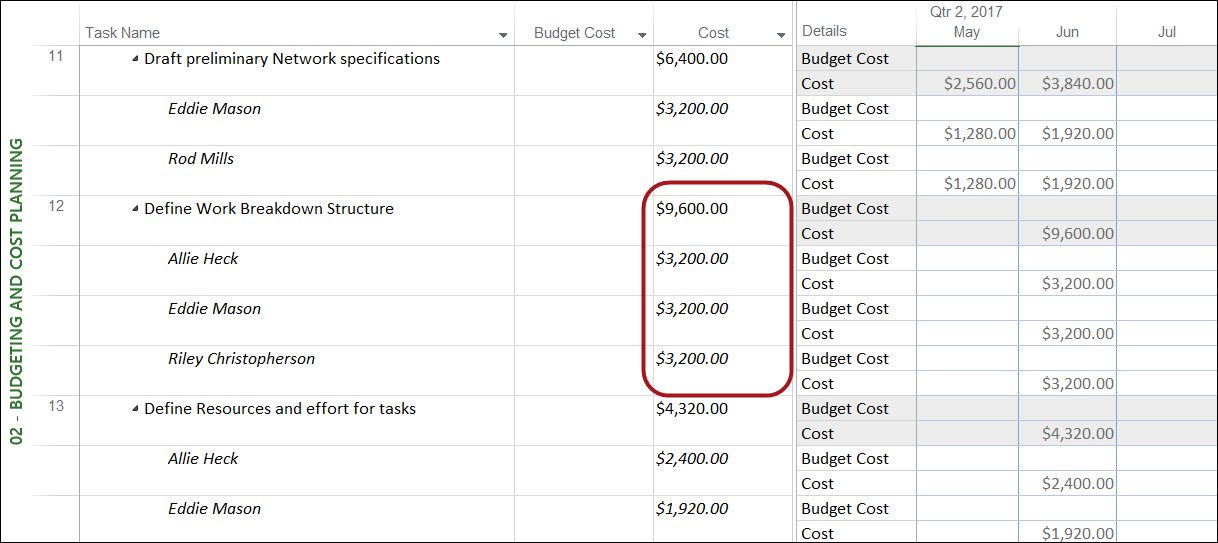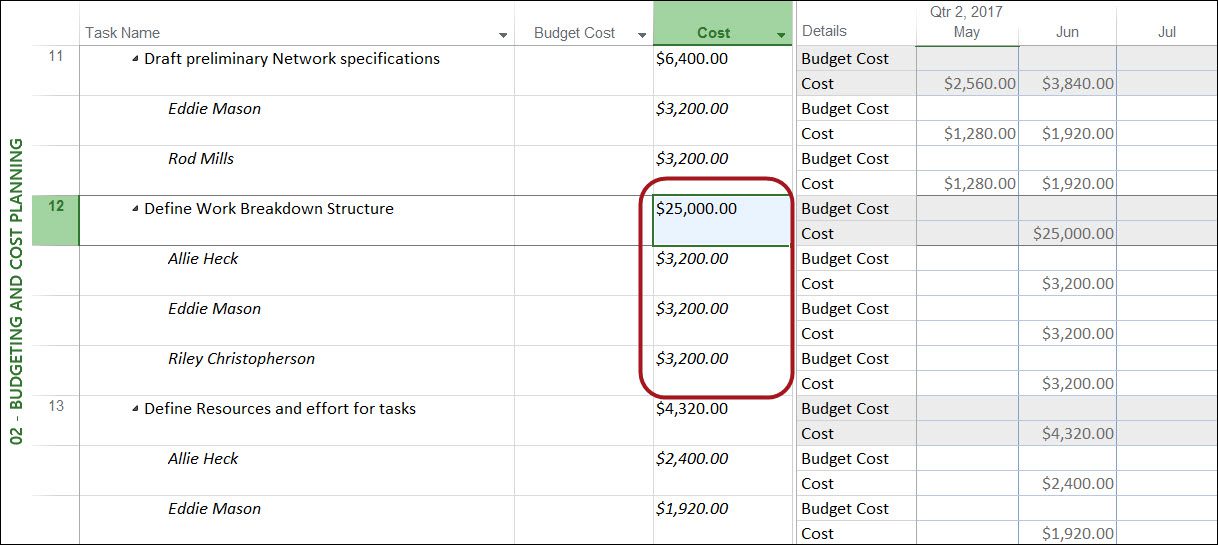 I recently learned something new about Microsoft Project. This new knowledge is an extension of how Project calculates the Cost value for each task. As most of us already know, the software calculates the Cost value for each task as the sum of the Cost values for each resource assigned to the task. For example, in the following figure notice that Cost value for the Define Work Breakdown structure ($9,600) is simply the total of the Cost values for the three resources assigned to this task ($3,200 for each of the three resources). This is the behavior that we expect to see in Microsoft Project.
I recently learned something new about Microsoft Project. This new knowledge is an extension of how Project calculates the Cost value for each task. As most of us already know, the software calculates the Cost value for each task as the sum of the Cost values for each resource assigned to the task. For example, in the following figure notice that Cost value for the Define Work Breakdown structure ($9,600) is simply the total of the Cost values for the three resources assigned to this task ($3,200 for each of the three resources). This is the behavior that we expect to see in Microsoft Project.
Last week one of our clients ran into an interesting situation with the task Cost field when they discovered that one of their project managers had manually typed the Cost value for a task. What the client saw in the project is similar to the project shown in the figure below. The client had a custom view applied, which in this case was the 02 – Budgeting and Cost Planning view. Notice that this view shows the Budget Cost and Cost columns for each task. Notice also that the Cost value for the Define Work Breakdown Structure task ($25,000) is not the sum of the Cost values for the three assigned resources (it should be $9,600).
As you might surmise, when the client saw this in the project, they were concerned. They reached out to our Delivery team to find out how it is possible for a project manager to manually type a Cost value for an individual task. They questioned whether this was a bug (otherwise known as a “feature”) in the software or something added by design. As a member of our Delivery team, I love “brain teasers” like this, so I gladly accepted the challenge to solve this problem.
The first thing I did was to apply the default Task Usage view and then to apply the default Cost table. With those two simple steps, I could quickly determine what happens when a project manager manually types a task Cost value. In this next figure notice that when I manually typed “$25,000” in the Cost column, Microsoft Project calculated a “Fixed Cost” value of $15,400 for this task.
This situation reminded me that the Total Cost value for any task is the sum of the Total Cost values for each resource assigned to the task, plus any Fixed Cost amount associated with the task. When I manually typed the $25,000 value in the Total Cost column for the task, Project assumed that there is an additional cost for this task, and the software entered this additional cost in the Fixed Cost column! The $15,400 value in the Fixed Cost column is the difference between the value I manually entered in the Total Cost column ($25,000) and the calculated total of the Total Cost values for the three resources assigned ($9,600).
So, I think you would agree that this behavior is definitely not a bug and is certainly by design. Keep in mind that there’s no way to prevent a project manager from manually typing a task Cost value, so keep your eyes on the Fixed Cost column for any projects you audit.
Do you have your own tricks for staying on top of manually entered data? Share them with the MPUG community in the comments below.
A version of this article originally appeared on the Sensei Project Solutions blog here.











Tony Haddad
Good catch, Dale! The Task Usage view has so many neat features!
Larua Stevens
Thanks for posting, Dale. One interesting variation of this behavior happens if you type in a task cost that is less than the sum of the assignment costs. Then, Project puts a negative cost into the Fixed Cost column, which certainly makes reporting interesting!
Trevor Rabey
Dale, good call, informative, useful, but I a a bit surprised that you only just discovered this.